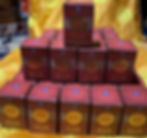about amchi kunga
Amchi Kunga Chotak, experienced practitioner of traditional Tibetan medicine, comes from a long and well respected lineage of amchis originating in Kham, the Eastern region of Tibet. (Amchi: the Tibetan word for doctor)
Although born in Tibet, Amchi Kunga was compelled to flee his homeland and escape to India, where during his many years as a monk, he studied Buddhist philosophy, astrology and Tibetan medicine.
His extensive knowledge and training passed down from generation to generation, combined with his intense studies at the monastery, has earned him recognition with the Central Council of Tibetan Medicine, in Dharamsala. He has also traveled extensively throughout Asia and after leaving the monastery, presided over many clinics in the Dharamsala, Goa and Ladakh regions of India.

herbal remedies
traditional
tibetan medicine
Traditional Tibetan Medicine For The Western World- A Holistic Approach to Better Health -Traditional Tibetan medicine is founded from an eons-old traditional medical system that employs a complex approach to diagnosis, incorporating techniques such as pulse analysis and urinalysis and applies dietary and behavioural factors as well as medicines compounded from natural materials (e.g.mainly herbs and minerals) and physical therapies to treat illness.Tibetan medicine is effective in all kinds of illness. It has proved particularly beneficial in the treatment of chronic diseases such as rheumatism, arthritis, ulcers, chronic digestive problems, asthma, hepatitis, eczema, liver problems, skin diseases, sinus problems, anxiety and problems connected with the nervous system.The basic theory of Tibetan medicine is to maintain or restore the balance the three subtle energies of the body. The long-term causative factors of these three energies are the three poisons of attachment,hatred and closed-mindedness which as foundational afflictive emotions create a common basis with Buddhist philosophy.
This Tibetan ink drawing shows three bodies
and what is believed to be the wiring behind the five senses and the consciousness — including the vertebrae and the solar plexus. Tibetan medicine, which is over two thousand years old, aims to free individuals from both physical disease and ignorance. Watercolor drawings of the twelve great teachers of Tibetan medicine, robed and seated, sit atop the main illustration.
"As an integrated system of health care, Tibetan medicine can offer allopathic medicine a different perspective on health. However, like other systems, it must be understood in its own terms, as well as in the context of objective investigation. In practice it can also offer Western people another approach to achieving happiness through health and balance."
































